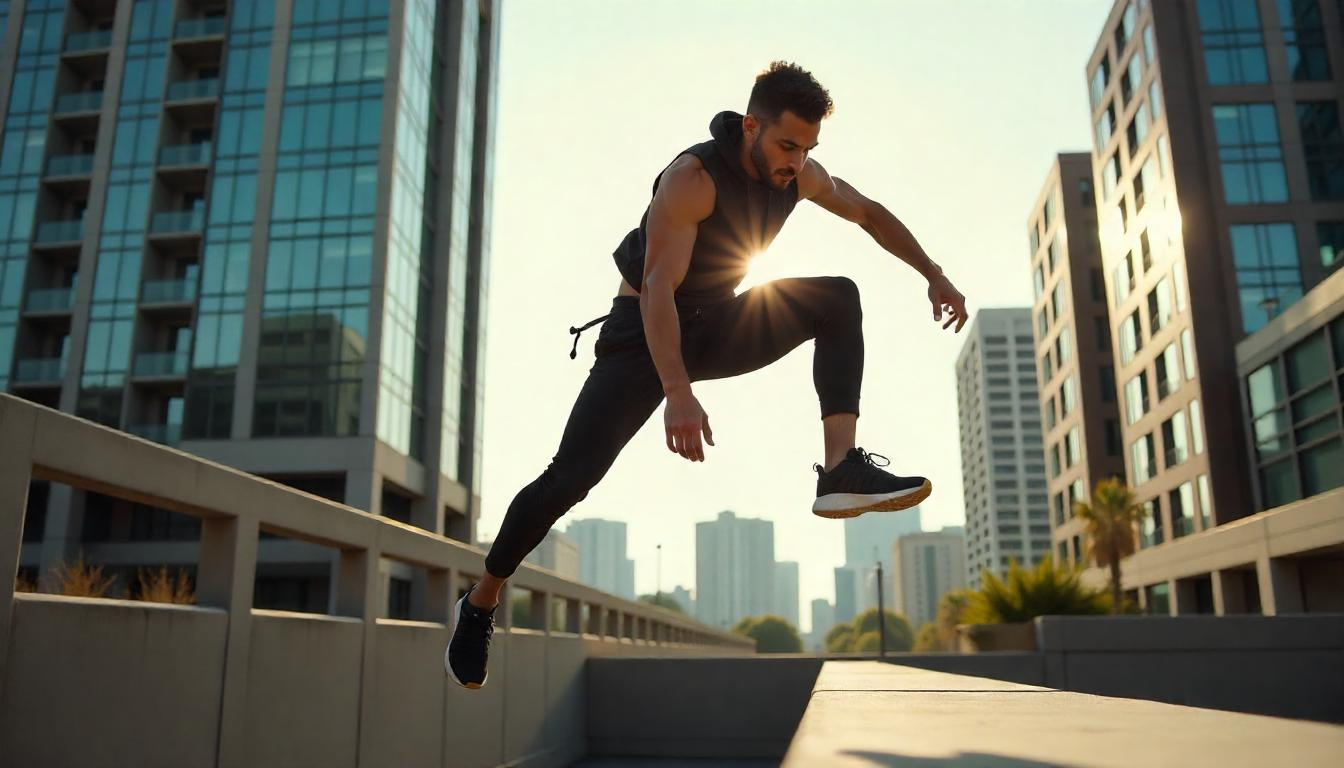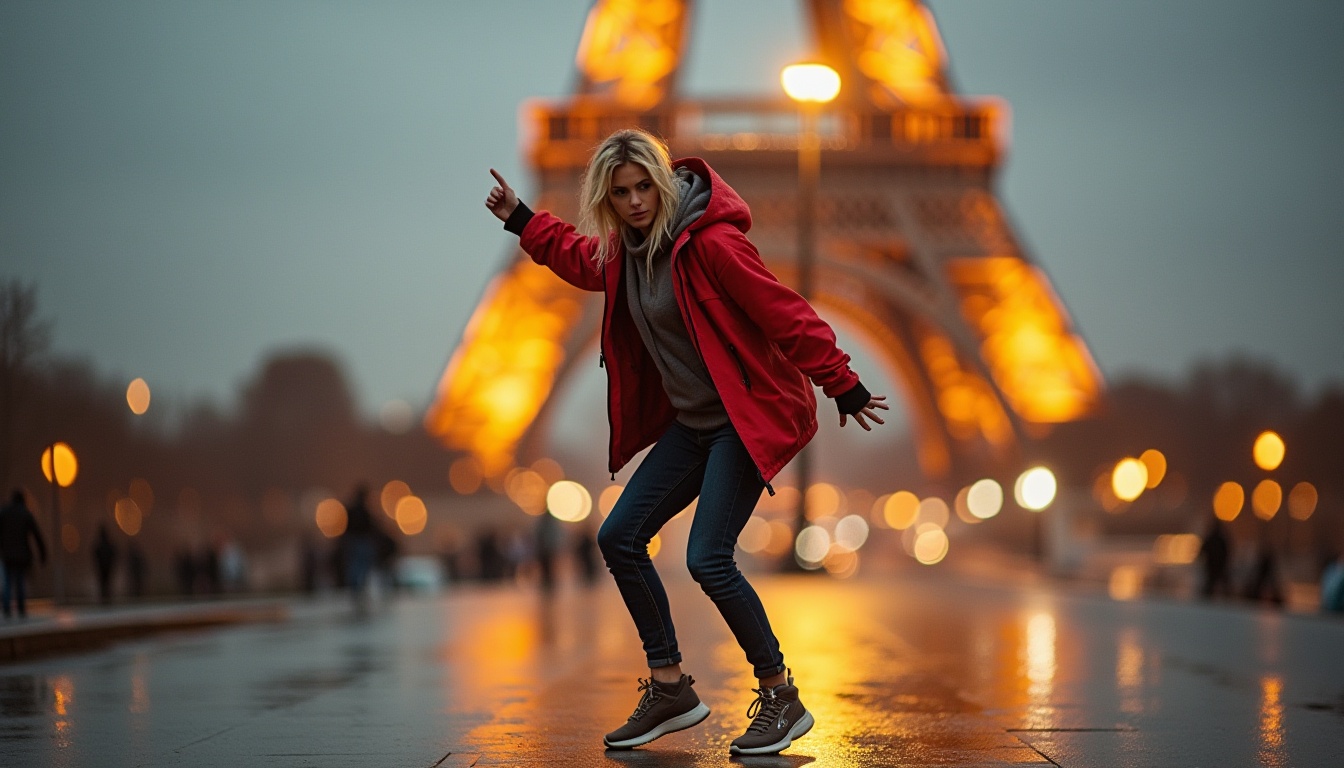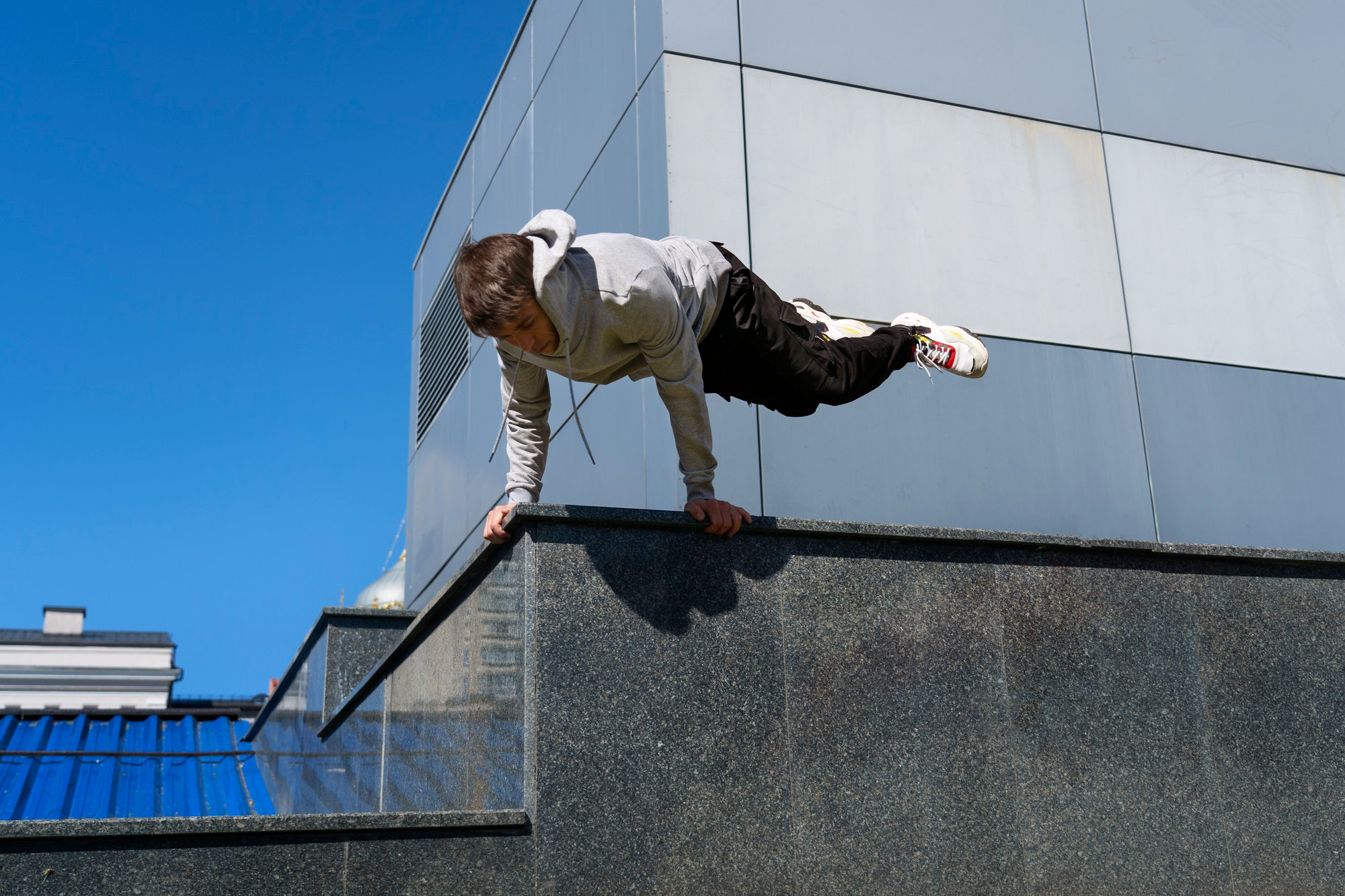Urban freerunning is fun. It combines being active, being imaginative, and being yourself. It evolved from parkour. Parkour is all about getting from one place to another well. Freerunning incorporates flips and sweet moves. Parkour is speed. Freerunning allows you to add your own style.
Freerunning is now very trendy. YouTube, Instagram, and TikTok feature people performing stunts in urban areas. It’s also used in competitions, games, and films. It makes more people want to do it. The article examines the development of urban freerunning. It started as parkour and expanded into a large movement. We’ll be able to see how it differs, learn some basic movements, and observe how it impacts city life. We’ll also discuss what comes next for this sport.

The Origins of Urban Freerunning
Urban freerunning originated in parkour, which was a practice developed by David Belle in the 1980s. Parkour had been inspired by military training and the natural way of moving. Parkour emphasizes traveling from point to point quickly and with ease. When more individuals practiced parkour, some wished to incorporate style.
Sébastien Foucan made this change possible. He named it “freerunning” in the early 2000s. Freerunning is not the same as parkour, which is all about being practical. Freerunning allows you to flaunt with spins and flips. This made it seem cool and interesting, perfect for cities.
Freerunning became popular due to films and web videos. Nowadays, it’s not merely a means of locomotion. It’s cultural. Freerunners just continue to innovate in cities. They use urban areas as if they were playgrounds.

Key Differences Between Parkour and Freerunning
Parkour and freerunning are alike, but they have different styles and objectives.
Parkour is about efficient movement. Competitors navigate through obstacles by taking the shortest route. They perform jumps, vaults, and wall runs to travel across cities. The objective is smooth, linear movement.
Freerunning is more of a creative expression. It is based on parkour but incorporates acrobatic stunts. Flips and turns bring style, not only speed. Freerunning makes movement an art. It combines gymnastics, martial arts, and dance.
As an example, a parkour athlete may utilize a basic vault. A freerunner can perform a backflip over the same obstacle. Freerunning also involves wall flips and corkscrews. These reflect skill and creativity. Parkour appreciates fast, flowing motion. Freerunning appreciates performance and artistic expression. Cities become areas to express art.
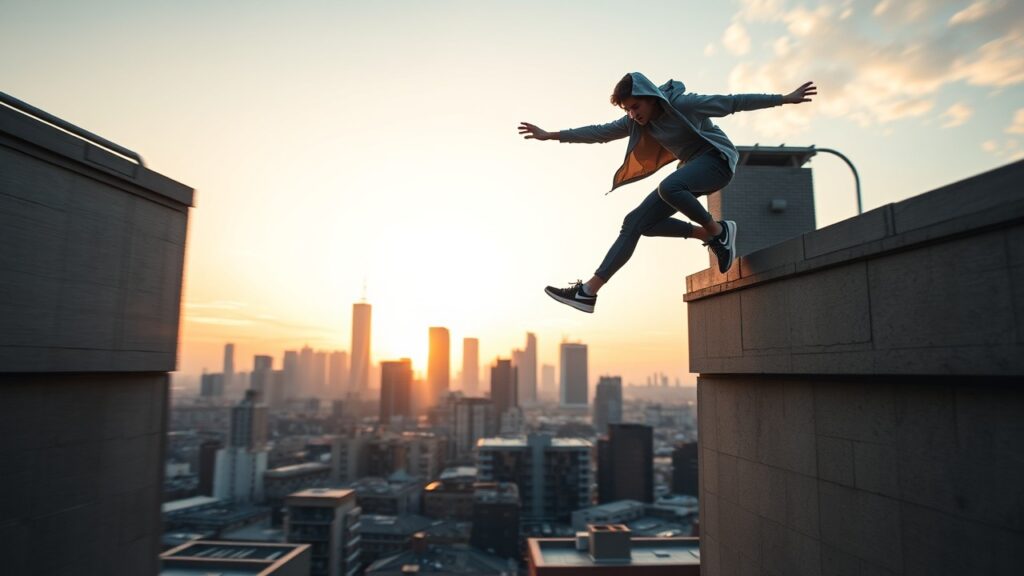
The Explosion of Urban Freerunning Culture
Urban freerunning is now extremely popular, primarily because of social media. Sites such as YouTube, Instagram, and TikTok boast incredible feats. Freerunners post stunts, moves, and city trips, which receive millions of views. Viral videos of flips and rooftop runs turned it into a global phenomenon. Freerunning communities also contributed to the growth of the sport. Local and international communities provide assistance to new competitors. Competitions such as Red Bull Art of Motion made it more tangible. These provide the best freerunners with a platform to demonstrate their abilities.
A few athletes and influencers made the sport famous. Founder Sébastien Foucan spread it through films such as Casino Royale. Jason Paul, Pasha Petkuns, and Dom Tomato have large followings on the internet. They test boundaries and influence new individuals.Social media aids its growth, and competitions provide value. Urban freerunning succeeds, demonstrating that it is not a phase. It is now a permanent aspect of culture.
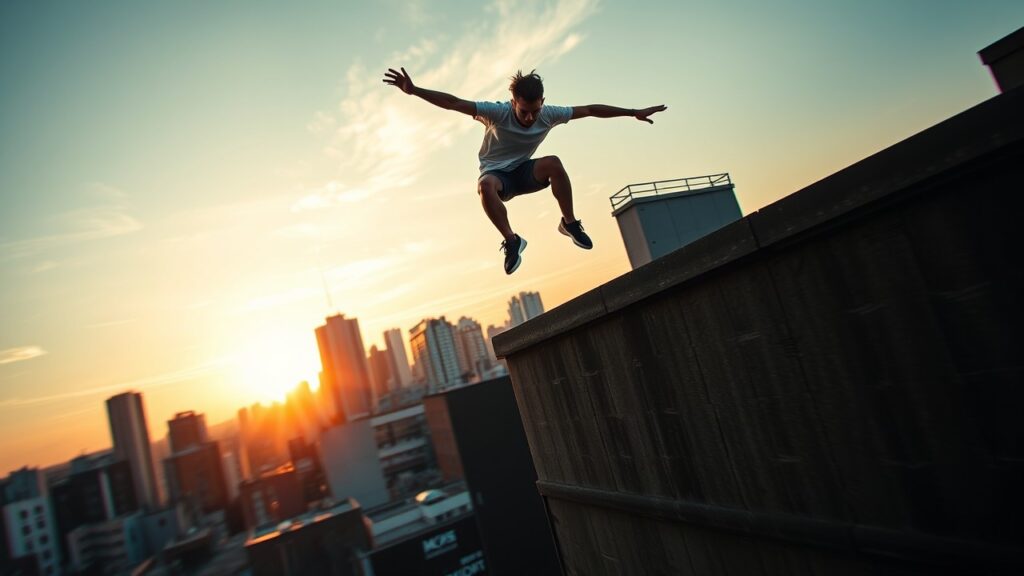
Essential Skills and Techniques in Freerunning
Freerunning is a mixture of strength, agility, and creativity that calls for sportsmen to learn various movements. They are classified into basic, intermediate, and advanced moves, with each one on top of the other.
Basic Moves:
- Precision Jumps – Getting down on narrow structures such as ledges and rails in precise manner.
- Vaults – Gliding past obstacles with hands and legs, like the safety vault and kong vault.
- Wall Runs – Climbing walls in order to get access to higher platforms.
Intermediate Moves:
- Tic-Tacs – Bouncing against walls to change direction or get height.
- Underbars – Swinging through rail gaps with precision.
- Cat Grabs – Latching onto ledges in mid-air to scale up or fall down in one piece.
Advanced Moves:
- Flips – Front flips, backflips, and side flips for extra flair.
- Corkscrews – A spinning flip that mixes rotation and air control.
- Double Twists – Twisting flips that demand utmost precision and skill.
Freerunners practice strength, balance, and flexibility through bodyweight exercises, plyometrics, and mobility drills. Mental conditioning is also important since freerunning requires risk-taking and the ability to overcome fear. Practicing both the mind and body, freerunners learn the confidence and control necessary in order to extend themselves while remaining safe.
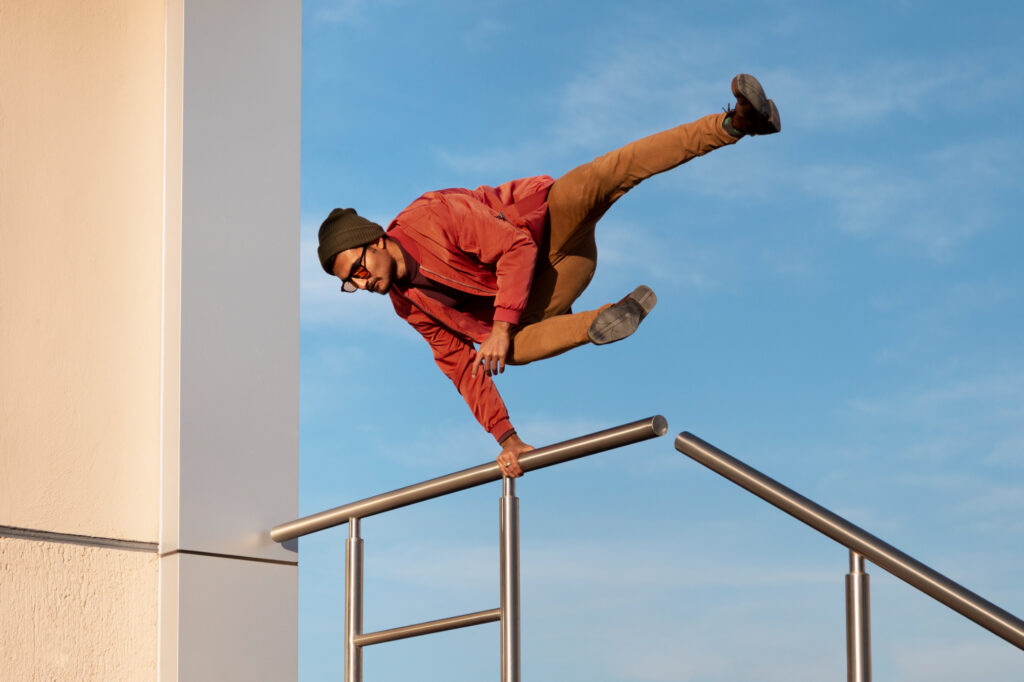
Urban Environments as the Playground
City freerunners see urban areas as gyms for themselves. They make use of rooftops, staircases, and walls in a productive manner. Stairways transform into jump spots. Rails turn into vaulting and flipping spots. Roofs are dangerous but enable great stunts and movements.
New surroundings adaptation is the best aspect of freerunning. Freerunners should adapt rapidly, switching their steps. They get accustomed to space, heights, and surfaces, unlike in a gym. That is what gives the sport that enjoyable and creative nature.
Safety and other people’s respect are most important. Freerunners must train in safety. They should not injure themselves or other people. Wrecking property is something to avoid. Special training places are what many experts desire. This makes freerunning fun and safe in urban areas.
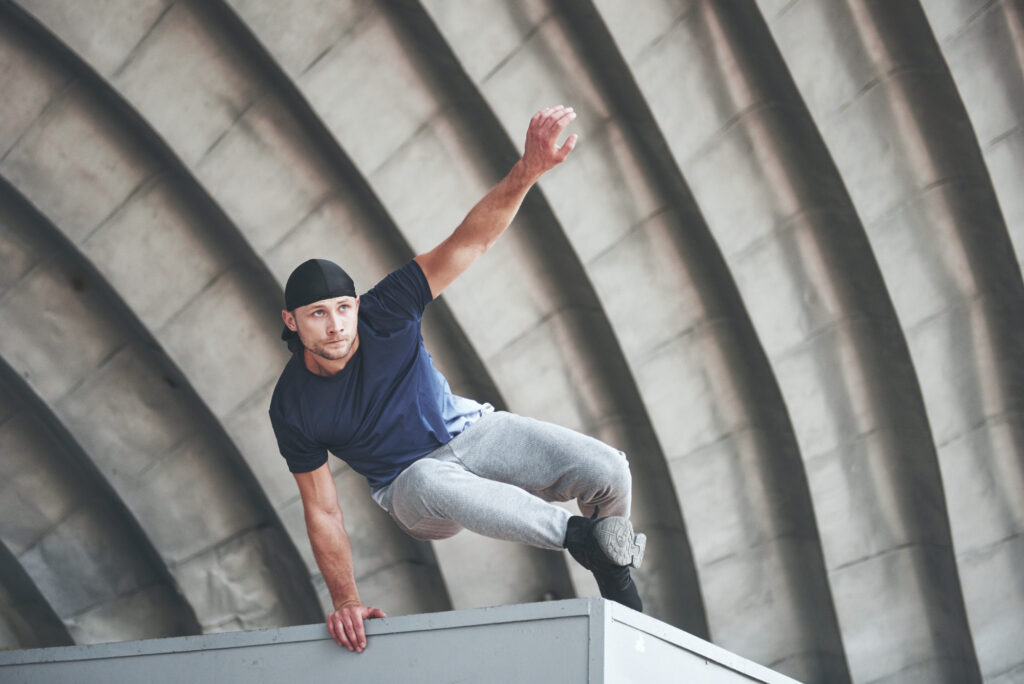
The Future of Freerunning
Freerunning is gaining more popularity in films, commercials, and computer games. Films like Casino Royale feature its incredible stunts. Computer games like Mirror’s Edge allow players to play parkour, and this gains them more followers.
Competition like Red Bull Art of Motion allow freerunners to demonstrate what they can perform. They promote skill and creativity. Freerunning is becoming an actual sport with more recognition.
Everybody’s discussing freerunning in the Olympics. Maybe it will be difficult to determine because it’s so free-spirited. However, it combines skill, art, and speed. For this reason, it is well-suited to be included in the Olympics soon. Freerunning will only continue to evolve and revolutionize sports, health, and city living.
Conclusion
Freerunning combines parkour with athleticism and creativity. Social media popularized it. Competitions and television made cities freerunning areas. Freerunners apply awesome moves and test the limits of what the body can do.
It is not just about moving; it’s a way of perceiving cities. Safety first, along with respect for public spaces. New freerunners must train carefully. This allows them to develop and continue doing it for many years.


